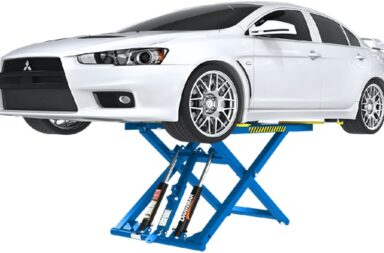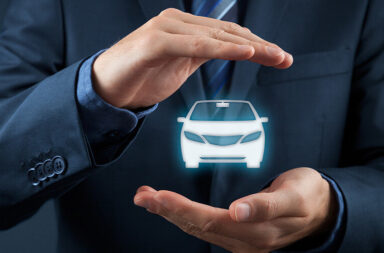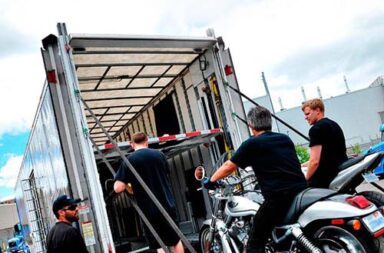Nashwan Habib on How to Keep Everybody Safe When You’re Getting Roadside Help
Emergency roadside assistance isn’t something most of us give a lot of thought until we need it, towing entrepreneur Nashwan Habib reminds us. But there are rules that your tow truck operator needs you to follow when you receive emergency roadside assistance and towing for your safety and theirs. Here are the top 10.
1. Nashwan Habib’s #1 request: When you see a tow truck or emergency service vehicle, please slow down and move over.
Tow truck drivers and emergency service vehicle drivers are 15 times more likely than the average American worker to be killed on the job. They are twice as likely to die on the job as underwater welders and commercial fishermen. Every year dozens of tow truck drivers are struck and killed by drivers moving too fast and hugging the shoulder of the highway, not seeing a tow truck driver stepping onto the pavement to get to the vehicle in distress.
Every state has its slow down, move over laws. Please be sure you are under the speed limit when you pass a tow truck and disabled vehicle by the side of the road. And give them the room they need to stay safe. You can save a life.
2. When you are receiving emergency roadside assistance, stand clear of your car.
It isn’t just tow truck drivers and emergency service workers who get killed at service stops. Every year, thousands of pedestrians are killed on the roadside in car crashes, especially:
- At night,
- Along the side of busy highways,
- In poorer neighborhoods,
- When the pedestrian is standing to the left (road side) of their vehicle, “supervising” the two truck drivers.
Nashwan Habib assures us that your tow truck driver will have an immediate sense of whether your car is your pride and joy. Your tow truck driver will work to keep your car safe, but they have to keep you safe, too. Don’t get between them and their equipment, and stay as far off the road as you can.
3. Try to stop in the safest place you can.
There will be times cars stall out in the fast lane. You can have a blowout on a two-lane bridge that’s 10 miles long that doesn’t have a shoulder. It’s not always possible to stop in a safe place.
But when you can stop in a place that gives your tow truck driver a safe space to work, please do. Your emergency help will know what to do in a tight situation, but try to make their job easier.
4. You don’t need to put your car in neutral before it’s towed.
We don’t really know how this myth got started, but it’s never necessary to put your vehicle in neutral gear before the tow truck driver loads it on the trailer. You don’t even need to ask. The driver will shift the gears of your car if necessary.
5. Don’t touch the controls in the tow truck.
Here’s one of tow truck drivers’ pet peeves, according to Nashwan Habib. You may be curious what some button, knob, lever, or stick on the dash of the tow truck controls, but leave them alone. When you are in the cab of a tow truck giving you a ride, act like you were in someone else’s office. Leave their workspace alone. Your driver knows how to use the special controls in the cab, and, frankly, you don’t.
6. Make yourself reachable.
When you call for a tow or for emergency assistance, keep your cellphone on, and don’t make other, unnecessary calls. Answer your cellphone when it rings. It could be your driver trying to find you, Nashwan Habib says.
7. Take time to be descriptive.
When you’re stuck by the side of the road, take a good look at GPS, so you can tell the tow truck dispatcher where you are. If you are driving an older model vehicle that doesn’t have GPS, be as descriptive as you can about your surroundings. It’s usually a mistake to call out a milepost number unless you are standing right by the milepost to confirm it. Rely on landmarks to describe your location. And if you don’t have a good sense of direction, if you have trouble telling whether you were traveling north of south or east of west, tell the dispatcher where you were traveling from and where you were traveling to.
It also helps to be descriptive when you are describing the kind of problem that caused your car to stop. If you don’t know what’s wrong with your car, be as descriptive as you can.
8. Get ready for roadside help by using your wait time productively.
Nashwan Habib advises that if you are stalled out by the side of the road, raise your hood, so the driver can recognize you faster. If you need help changing a tire, clear out your trunk, so it’s easier to reach your spare. Have anything you need to take out of your car with you so your driver won’t be delayed when it’s time to take you to your next destination.
9. Keep your small talk small.
It’s OK to make small talk with your driver as you ride to the repair shop, says Nashwan Habib. But don’t get deep into your life history or ask overly personal questions about theirs.
10. Be patient.
Your emergency roadside assistance helpers expect you to be scared, tired, angry, thirsty, hungry, or generally out of sorts after your auto mishap and your wait for help. But be patient with them. They have feelings, too. They know that having to get a tow disrupts your day, but they can serve you better when you give them the respect they deserve.
Nashwan Habib currently has a fleet of over 50 heavy tow trucks that are available twenty-four-hours-a-day and seven-days-a-week. All can be monitored by satellite and quickly dispatched throughout San Diego and its surrounding cities through our 24/7 Customer Service Center.


